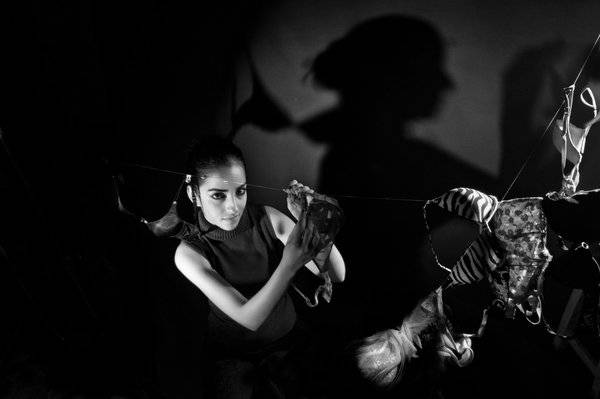The Karachi-based artist Samya Arif draws on a digital tablet and finds inspiration in traditional Pakistani motifs and psychedelic art from the 1960s and 70s.
She graduated six years ago from the Indus Valley School of Art and Architecture and has since worked to cobble together a career in Pakistan’s nascent art and design scene by illustrating for magazines, teaching, designing websites, T-shirts and restaurant menus.
In January, she had her first big break when a kaleidoscopic taxicab interior that she created — part of a Mumbai-based program, Taxi Fabric, which turns the city’s taxis into canvases for artists — was featured in the music video for Coldplay’s “Hymn for the Weekend.” The video, now seen on YouTube over 295 million times, was set in Mumbai. Chris Martin sings inside the aforementioned taxicab while Beyoncé, covered in henna tattoos and an ornamental headband, posed as a Bollywood goddess.
Ms. Arif — part of a clutch of young Pakistani artists who have been featured in magazines like Pitchfork and The Fader — continues to find international recognition. She recently designed a record sleeve for the Australian band Tame Impala and is at work painting a “book bus,” a kind of mobile library, for the American Embassy in Kathmandu, Nepal. She is also exhibiting work at the Alchemy Festival, which opens this month at the Southbank Center in London. The following is an edited transcript of a conversation with Ms. Arif.
Q. You’ve said that choosing to be an artist has made you the “black sheep” of your family. Why?
A. My parents always knew that I was an artistic kid, but they are practical people. I’m very much from the middle class, so it’s not like I’m coming from a very comfortable background. My parents have worked hard to be where they are. And so I think for them it was important that I be financially independent. They sort of tried to steer me toward studying architecture, because they thought at least I’d have a job. Three months into it, I was like, “Oh my God, what am I doing here?” I started skipping classes. One day, my dad went to pay my fees and was told, “Your daughter is not enrolled.” I had to come clean to them and told them my heart’s not in it, that I would rather do something that I’m passionate about. At first they didn’t understand it.
Is it hard to find opportunities in Pakistan?
Historically yes, although the good thing is that things are picking up. And in a way I’m grateful to be here. If I were doing the same thing in Berlin, I think it would be much harder to get noticed because there are a lot of brilliant people doing a lot of brilliant things over there. But in Pakistan the market for it is still new. People are just realizing that, Hey, being a D J. or being an illustrator can be a job. An awakening is taking place, and the opportunities are really ripe.
The video that your taxi design appeared in has received some backlash for promoting clichés about the subcontinent. How does that strike you?
I have been thinking about this idea of cultural appropriation — whether it be Indian or African-American culture being used by other people. Being Pakistani, I think there’s a lot of things that we adopt, especially in the younger generation. Everyone I know watches English movies, listens to English music. If we can adopt their things, if I can wear jeans and pants instead of my traditional outfit, and expect not to be pointed out, and feel just like myself, then I think it’s alright for the West to do the same thing. But maybe not just as an aesthetic? Maybe they should go a little deeper? It should not be used only as ornamentation. That’s what people did not like about the video. I personally did not mind the video so much because it has my taxi in it. [Laughs]. But I can understand what people are saying.
In addition to your artwork, you also do editorial illustrations, some of which are quite provocative, tackling topics like religious terrorism or the Pakistani military. Do you think it’s dangerous to address such issues?
It’s a slight concern in the back in the mind. What you see in the news about Pakistan is just a small percentage of what the actual picture is. But there is a sort of divide in Pakistani society between modern people and religious people and sometimes you get a few comments from people who don’t understand what you’re trying to say. Once I was painting a mural with a friend, and we painted two women below their necks and we were asked to sort of “cover the cleavage” — although there was no real cleavage to cover.
What is it about psychedelic motifs that so inspires you?
In a way, psychedelic culture is very close to Pakistan’s culture: we have a lot of color, in our patterns, in our textiles, our monuments, so the bridge is there for me to connect both things. As a child, I saw a film about hippies in America and I don’t think I ever got over it. I often think about the Hippie Trail, and how so many hippies traveled all the way to Pakistan. I want to come to America, to go to the source of all this psychedelic art, although I don’t know how many hippies still exist.
Courtesy New York Times






